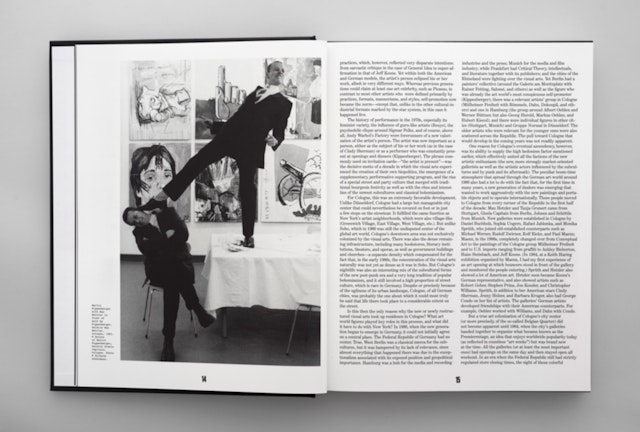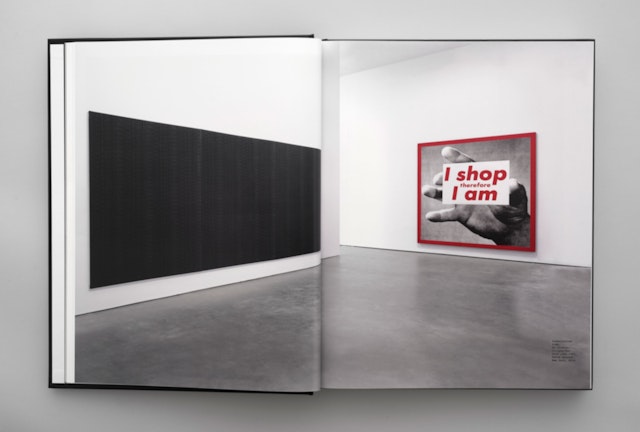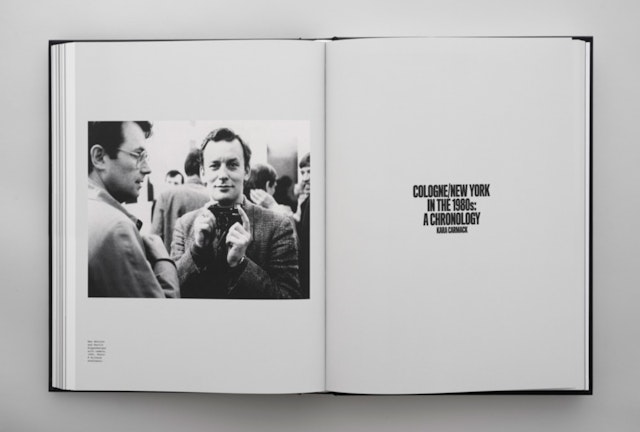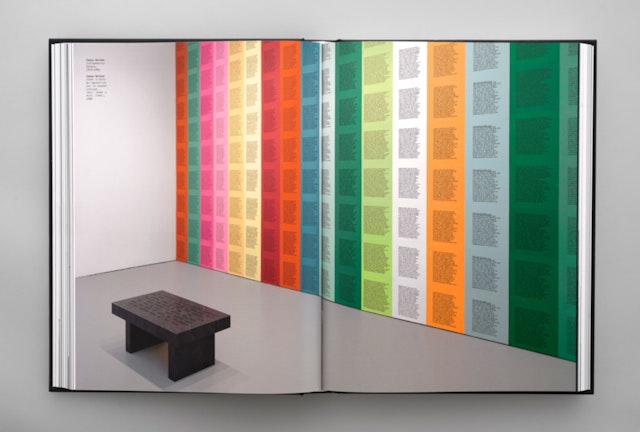




The strong but simple type-only cover also echoes the DIY spirit of the period, which followed closely on the heels of punk.









In the 1980s, New York and Cologne were twin cities of the contemporary art world, a pair of visionary local art scenes who were engaged in an intercity cultural dialogue that helped produce many of the generation’s most influential artists and galleries. This remarkable era is explored in No Problem: Cologne/New York 1984-1989, a new publication from David Zwirner Books. Pentagram has created a design for the book that reflects the exuberant spirit of the period and its art.
The book follows the 2014 exhibition of the same name at David Zwirner, one of the first surveys to look at the connection between the two cities. In the 1980s, art being produced in and around Cologne started gaining international attention, and a growing gallery scene supported emerging work from the region and beyond. German artists such as Martin Kippenberger, Rosemarie Trockel and Albert Oehlen were exhibited along with the latest contemporary art from the U.S. by artists like Jeff Koons, Richard Prince, Cindy Sherman, Raymond Pettibon, Richard Prince and Christopher Wool. At the same time, New York galleries such as Metro Pictures and Barbara Gladstone were showing the works of German artists. This cross-fertilization helped shape the vibrant art and visual culture of the period and decades since.
Writer and curator Bob Nickas, who contributes an essay to the book, spoke about the era: “It’s interesting how small the art scene was back then—it allowed for a lot of back and forth,” Nickas said. “Information had to travel by word of mouth. There was an exchange between the two cities. Soho (in New York) and Cologne were like small villages. That’s why the book captures something real and vibrant.”
The designers worked on the design with the book’s editor, Alexandra Whitney, who curated the 2014 exhibition. The designers wanted to create something that felt true to the period and also hinted at what was to come. This starts with the cover, which spells out the title in big, bold Titling Gothic. Names of the featured artists fill the line spaces between, like actors listed on a playbill or movie poster. The design suggests how, to a certain extent, the artists of the period were characters of their own making, and the future stars of the art world.
The strong but simple type-only cover also echoes the DIY spirit of the period, which followed closely on the heels of punk. On the back cover, “No Problem” parses perfectly into three lines. (The title is taken from Kippenberger’s No Problem Pictures.)
Inside, the art is so striking the designers did their best to stay out of the way and let it speak for itself. Images of over 100 artworks from the recent No Problem exhibition are vividly displayed in an extensive portfolio of large plates, interspersed with archival photographs of the pieces in their original gallery installations. These historical images help create a context for the works and the period, and are offset from the recent views with a black background. Two essays bookend the portfolio, the first a history by the German critic Diedrich Diederichsen, the other a contemplative portrait of the era by Bob Nickas. Both are illustrated with period photos, set in the highly readable Century Expanded and printed on a matte paper stock that sets them apart from the portfolio.
The book closes with an expansive 40-page chronology of the 1980s that documents influential exhibitions and artistic developments in Cologne and New York, as well as historical and cultural milestones around the world. Written by Kara Carmack, the chronology is dense with information and richly illustrated with reference images of exhibitions, gallery ephemera and other material. The typography is set in Courier, a reference to the typewritten correspondence that linked the two cities.
Nickas sees No Problem as an important record and the starting point of additional scholarship about the era. This aligns with the mission of David Zwirner Books, which was established by the gallery in 2014 to publish catalogues, monographs, historical surveys, artist books, and catalogue raisonnés related to its exhibition program, with the goal of providing a valuable resource to curators, scholars, students and art lovers alike.
“Books live on,” Nickas said. “The show is up for a month in a gallery, but books live on. Books are democratic. They make art more available to more people. What’s great is the book has a life beyond the show. It becomes a sourcebook. Art is valuable but books are more available to more people and we should all be interested in that.”
Office
- New York
